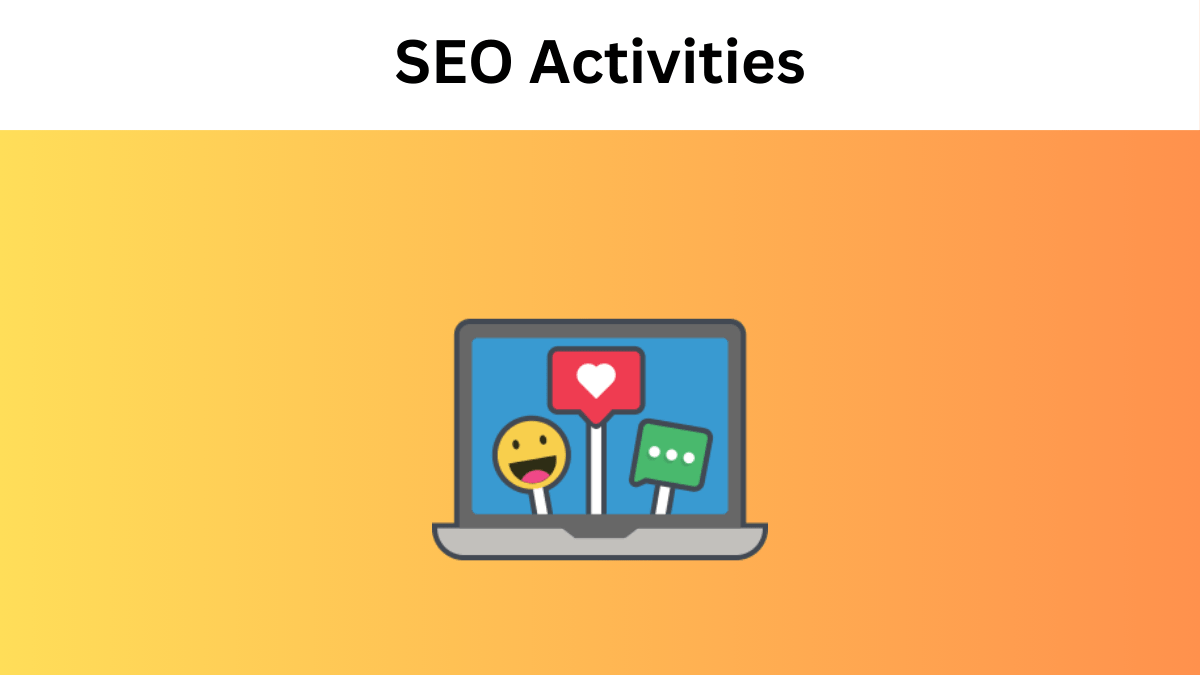SEO Activities You Need to Do with Your Website
Effective Search Engine Optimization (SEO) is essential for any website’s success. By implementing the right SEO strategies, you can enhance your site’s visibility on search engine results pages (SERPs), thereby driving more traffic and boosting revenue. Here are the primary SEO activities you should concentrate on:
Contents
On-Site Optimization
On-site optimization, also known as on-page SEO, focuses on enhancing individual web pages to rank higher and attract more relevant traffic. Here are the main components of on-site optimization:
1. Keyword Research and Usage
Identify the keywords your target audience is searching for. Use tools like Google Keyword Planner, Ahrefs, or SEMrush to discover high-traffic, low-competition keywords. Once you have these keywords, integrate them naturally into your content, titles, meta descriptions, headers, and image alt texts.
2. Content Quality
Produce high-quality, informative, and engaging content that addresses your audience’s needs. Ensure your content is original, well-researched, and regularly updated. Use a mix of text, images, videos, and infographics to enhance the user experience.
3. Meta Tags
Optimize meta titles and descriptions for each page. Make sure your meta tags are compelling and include your primary keywords to attract clicks from SERPs.
4. URL Structure
Ensure your URLs are clean, descriptive, and contain relevant keywords. Avoid long and complex URLs.
Semantic Core Collection
Semantic core collection involves gathering and organizing keywords and phrases relevant to your website’s content. This process includes:
1. Identifying Primary and Secondary Keywords
Primary keywords are the main terms you aim to rank for, while secondary keywords are related phrases that support the primary keywords. Both should be naturally incorporated into your content.
2. Understanding User Intent
Analyze what users are seeking when they search for your keywords. Create content that meets their intent, whether it’s informational, navigational, transactional, or commercial.
3. Cluster Analysis
Group related keywords into clusters. This helps in creating comprehensive content that covers a topic in-depth, improving your chances of ranking for multiple keywords.
Fixing Technical Issues
Technical SEO involves optimizing your website’s infrastructure to ensure it can be easily crawled and indexed by search engines. Key technical issues to address include:
1. Site Speed
A fast-loading website provides a better user experience and is preferred by search engines. Use tools like Google PageSpeed Insights to identify and resolve issues that slow down your site.
2. Mobile-Friendliness
Ensure your website is responsive and offers a good user experience on all devices, especially mobile. Google uses mobile-first indexing, so this is crucial for SEO.
3. Crawl Errors
Regularly check Google Search Console for crawl errors. Fix issues like broken links, 404 errors, and server errors to ensure search engines can index your site properly.
4. XML Sitemap and Robots.txt
Create an XML sitemap to help search engines understand the structure of your site and find new pages. Use a robots.txt file to control which pages search engines can and cannot crawl.
Link Building
Link building is the process of acquiring hyperlinks from other websites to your own. Quality backlinks are a crucial ranking factor. Here are the main activities involved:
1. Guest Blogging
Write articles for other reputable websites in your niche. In return, you usually get a backlink to your site. This helps drive traffic and improve your site’s authority.
2. Resource Link Building
Create valuable resources, like guides or tools, that other websites will want to link to. Reach out to sites that have linked to similar resources and suggest they link to yours.
3. Using Link Building Services
Utilize link-building services that connect link buyers with link sellers or website owners. These platforms help you find opportunities to purchase high-quality backlinks, ensuring they come from relevant and authoritative sites.
4. Broken Link Building
Find broken links on other websites within your niche. Reach out to the site owner, informing them of the broken link and suggesting your content as a replacement. This not only helps them but also earns you a backlink.
5. Social Media and Content Promotion
Promote your content on social media platforms and engage with your audience. This can lead to more shares, visibility, and potential backlinks from other websites.
By focusing on these main SEO activities—on-site optimization, semantic core collection, fixing technical issues, and link building—you can significantly improve your website’s search engine rankings and attract more organic traffic. Remember, SEO is an ongoing process that requires regular updates and monitoring to stay ahead of the competition.
